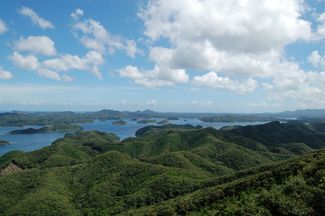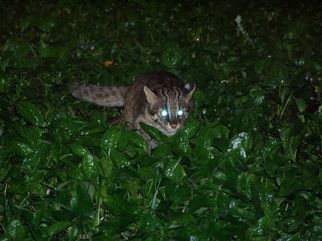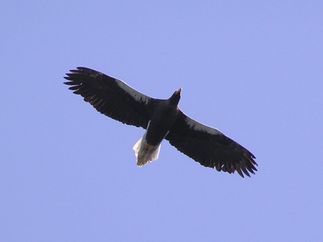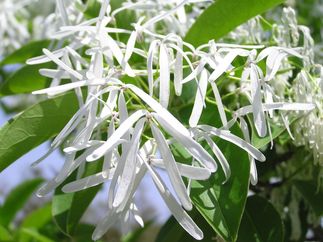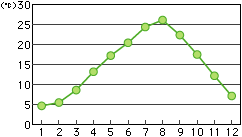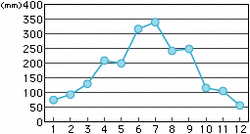Nature
|
In Tsushima, 89% of the entire island is covered with forests. Primeval forests remain in Mt. Tatera in Izuhara, and Mt. Shiratake in Mitsushima. Both of these mountains are designated as natural treasures of Japan.
Aso wan (Aso Bay) is located in the central part of the island, and is regarded as one of the most representative scenic viewpoints in Tsushima. Various sizes of inlets and small islands create a deeply indented coastline (also known as ria coast) and is designated as Iki-Tsushima National Park. |
wildlife
|
There are wild animals that inhabit only the island of Tsushima. The origin of these animals goes back more than ten thousand years ago during the Ice Age. During this time, Tsushima was connected with the Asian Continent by land which allowed many continental species to move southward into Tsushima.
As the Ice Age came to an end, the Earth's temperature and the sea level rose, making Tsushima a completely isolated island. Some of these continental species became extinct after the Ice Age. However, some, including the Tsushima leopard cat, evolved to adjust to the new environment. Until today, Tsushima has a peculiar ecological system of having a mixture of animals of the Japanese Archipelago and the Asian Continent. |
migratory birds
|
Tsushima is considered as a crossroads for migratory birds. The best seasons for bird watching are spring and fall. Many of these wild birds migrate between their breeding grounds in Russia and in China, and their wintering spot in southeast Asia. Tsushima is located in between these areas, which makes it a perfect resting point for migratory birds.
Rare birds such as the Black-Capped Kingfisher can be observed during the Golden Week holidays in May. Other wild birds such as the steller's sea eagle and the hooded crane can be observed during winter. The Tsushima Bird Watching Society was established in 2005. Since then, the society has been recording many rare wild birds that migrate to Tsushima. |
plants
|
There are various species of plants that grow naturally on the island of Tsushima throughout the year. Due to its geological features, Tsushima has a peculiar ecological system of having a mixture of plants of the Japanese archipelago and the Asian continent.
Hitotsubatago (Chinese fringe trees), which are designated as the tree of the city of Tsushima, mainly grow in Waniura district in Kamitsushima. Hitotsubatago flowers bloom in May. At the same time, the Hitotsubatago Festival is held each year. A large number of tourists come and visit to see the entire mountain beautifully blooming with white snow flowers. In addition, Waniura district was designated as a national natural treasure in 1928 for its naturally grown hitotsubatago trees. |
climate
Tsushima has an oceanic climate due to being surrounded by warm Tsushima currents. The yearly average temperature is 15.5°C and therefore, the island is relatively warm throughout the year. However, due to seasonal wind from the Asian Continent, it gets cold and chilly from fall to early spring.
Spring begins in Tsushima as seasonal wind carries yellow dust from the Asian Continent. Sakura cherry blossoms bloom a little later than the main island of Kyushu, and the weather is often chilly during this time of year.
In summer, daytime is slightly shorter and the temperature is 1~2°C lower than the main island. It is quite cool and easy to bear the summer heat due to sea breeze helping the heat not to build up on land. The annual precipitation is more than 2,100mm. About 60% of rainfall happens from June to October, and the typhoon season reaches its peak in September. Despite having high precipitation, storm and flood damage rarely occurs due to having relatively hard geological strata and well preserved forests on the island.
In winter, cold seasonal wind from the Asian Continent blows from the northwest and therefore, the temperature drops dramatically. However, it rarely snows due to being surrounded by the ocean.
Spring begins in Tsushima as seasonal wind carries yellow dust from the Asian Continent. Sakura cherry blossoms bloom a little later than the main island of Kyushu, and the weather is often chilly during this time of year.
In summer, daytime is slightly shorter and the temperature is 1~2°C lower than the main island. It is quite cool and easy to bear the summer heat due to sea breeze helping the heat not to build up on land. The annual precipitation is more than 2,100mm. About 60% of rainfall happens from June to October, and the typhoon season reaches its peak in September. Despite having high precipitation, storm and flood damage rarely occurs due to having relatively hard geological strata and well preserved forests on the island.
In winter, cold seasonal wind from the Asian Continent blows from the northwest and therefore, the temperature drops dramatically. However, it rarely snows due to being surrounded by the ocean.

